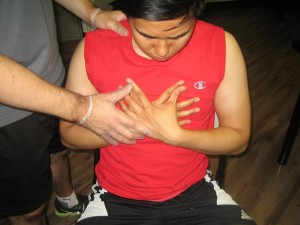Shock is a condition in which there is inadequate flow of blood in the body. As the lifeline of the body, the blood supplies all vital organs with oxygen. If the blood supply is not enough, the organs can become damaged and ceases to function properly. This is a life-threatening condition that requires immediate emergency care. By being familiar with the symptoms and first aid measures, you can help save a life.
What are the causes?
Shock is categorized based on the cause. First, the cardiogenic form occurs during heart problems such as heart failure or a heart attack. If there is diminished blood volume due to substantial bleeding or dehydration, it results to the hypovolemic form.
Anaphylactic shock arises if a severe allergic reaction develops. Even infections can also trigger changes to the blood vessels, thus resulting to the septic form. Lastly, the neurogenic form occurs if there is damage to the nervous system.
Do not forget that certain medications can also lower the blood pressure and affect the heart in a drastic way that shock can occur.
Symptoms
An individual in the state of shock will have a very low blood pressure. You can also observe bluish fingernails and lips that indicate lack of oxygen or blood supply. Understandably, the lack of blood supply to the brain will result to anxiety, confusion and fainting.
The cardiovascular symptoms include chest pain and weak yet rapid pulse. Other indications include heavy sweating, shallow breathing and cool skin. The individual might lose consciousness.

Management of shock
If you suspect that an individual is in shock, the essential step is to call for emergency assistance right away. If the individual is not breathing or there is no pulse, you have to perform CPR.
In case there are injuries or wounds, you have to provide the appropriate first aid care. Do not forget to loosen up any tight or constricting clothing. If the individual is awake and has no damage to the head, spine, neck or legs, assist him/her in the shock position. This position involves placing the individual on his/her back and elevating the legs 12 inches high.
If the individual is vomiting, turn his/her head to the side to prevent choking unless a spinal injury is involved. In case you suspect damage to the spine, you have to roll the individual on his/her side, making sure to keep the head, neck and back properly aligned.
What to avoid
Do not elevate the head of the individual or provide anything to eat or drink. It is also not recommended to move the individual if the condition is due to a spinal cord injury.
If the individual is experiencing only the mild symptoms of shock, it is vital to seek immediate medical care. Do not wait for the symptoms to worsen. Timely treatment can help minimize the damage to the vital organs.
FACT CHECK
https://medlineplus.gov/ency/article/000039.htm

